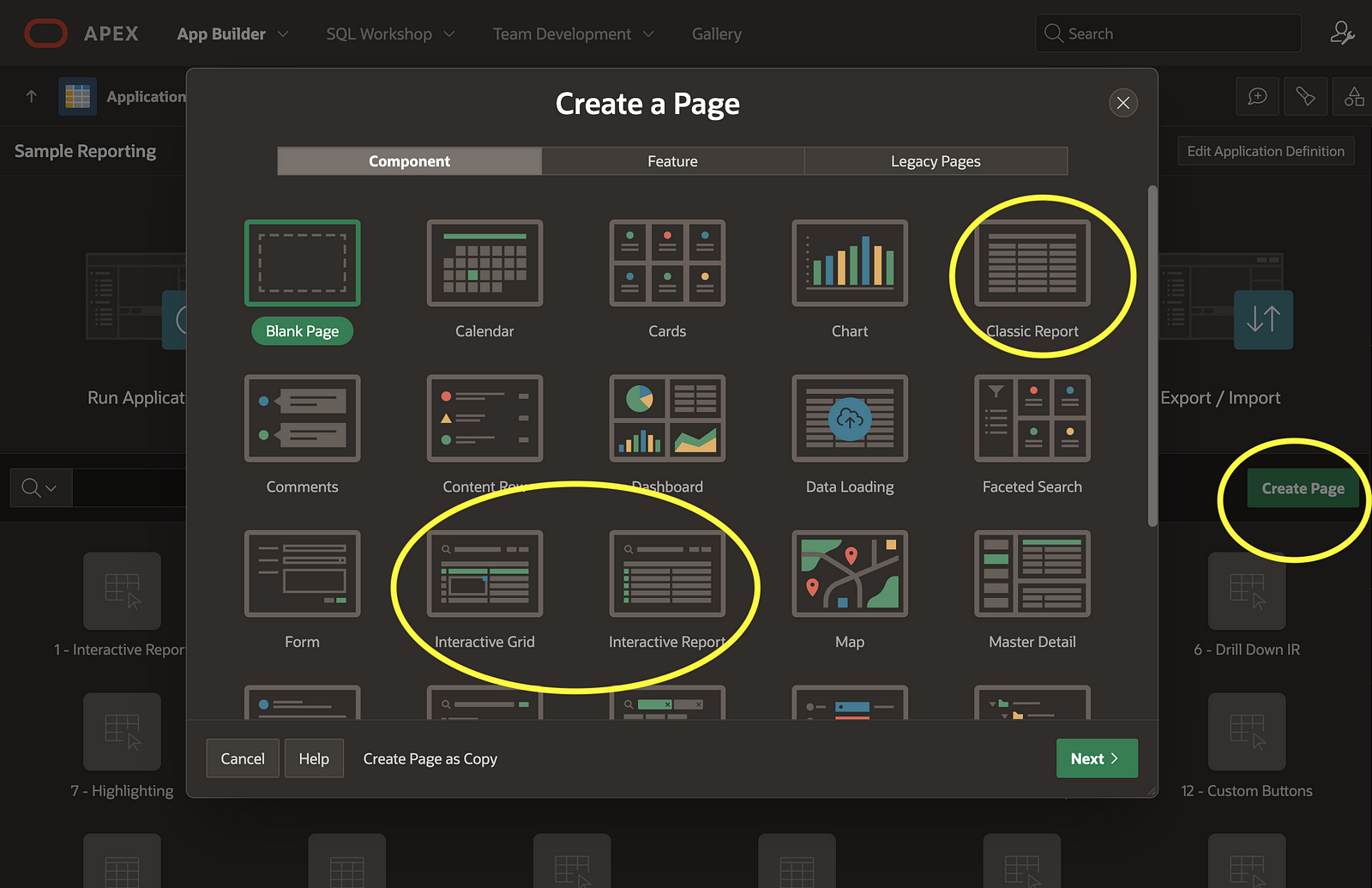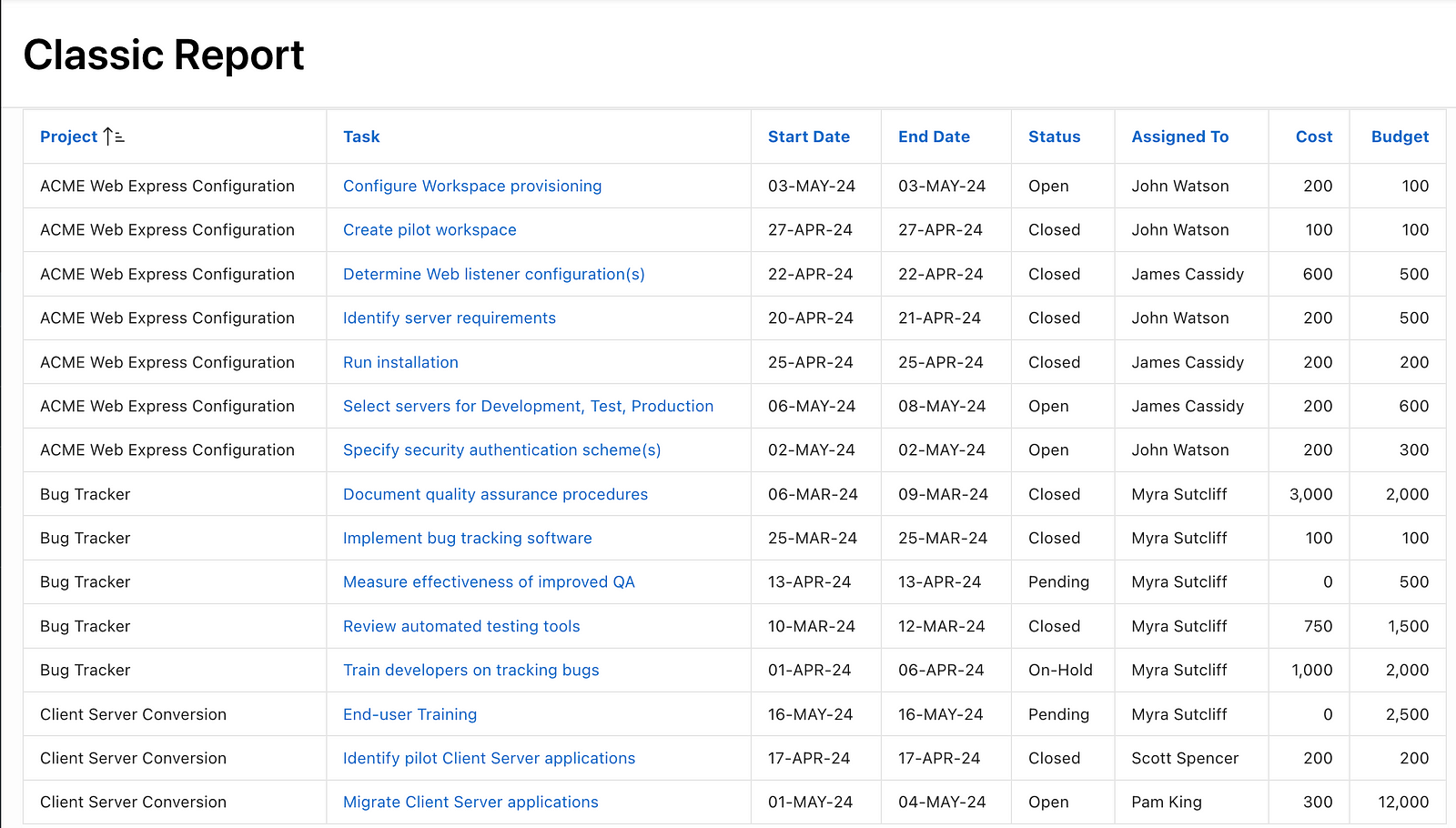
Oracle APEX offers various report types to display data effectively, catering to different user needs and preferences. Here’s an overview of the three main report types:- Interactive Report, Interactive Grid, and Classic Report:
Interactive Report

Interactive Reports are highly customisable and user-friendly. They offer features such as sorting, filtering, highlighting, and aggregation directly within the report itself, providing users with a dynamic and interactive experience.
Key Features:
- Interactive Features: Users can sort, filter, and customise the display of data interactively without needing to reload the page.
- Dynamic Actions: Developers can define dynamic actions to respond to user interactions, such as refreshing data or executing custom logic.
- Export Options: Interactive Reports support exporting data to various formats like Excel, CSV, and PDF.
- Best Use Cases: Interactive Reports are ideal for scenarios where users need to analyze and explore data interactively, such as data exploration and ad-hoc reporting.
Interactive Grid:

Interactive Grids are advanced, editable grids that provide extensive features for manipulating and managing tabular data. They offer functionalities like inline editing, drag-and-drop reordering, and row highlighting.
Key Features:
- Inline Editing: Users can edit data directly within the grid, making it convenient for data entry and updates.
- Multi-row Selection: Users can select and perform actions on multiple rows simultaneously.
- Client-side Features: Interactive Grids support client-side validations, calculations, and formatting, enhancing the user experience.
- Best Use Cases: Interactive Grids are suitable for applications requiring extensive data manipulation, such as data entry forms, spreadsheet-like interfaces, and project management tools.
Classic Report:

Classic Reports provide a traditional tabular layout for displaying data fetched from a SQL query. They offer basic functionalities for sorting and paging through data.
Key Features:
- Tabular Display: Classic Reports present data in a simple tabular format, making them easy to understand and navigate.
- SQL Query Integration: Developers can define SQL queries to fetch data from the database and display it in the report.
- Basic Pagination: Classic Reports support basic pagination for navigating through large datasets.
- Best Use Cases: Classic Reports are suitable for displaying straightforward tabular data with minimal interaction requirements, such as displaying employee listings, product catalogs, or transaction histories.
In summary, Oracle APEX provides a range of report types, each catering to different user needs and scenarios. Whether it’s interactive data exploration, advanced data manipulation, or simple tabular display, developers can choose the appropriate report type to deliver an optimal user experience.